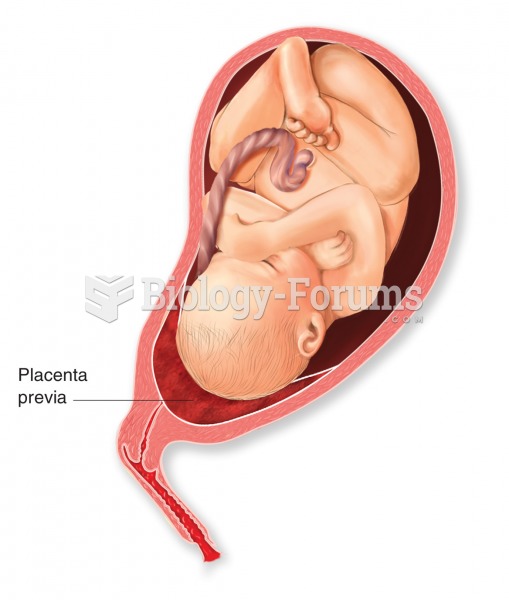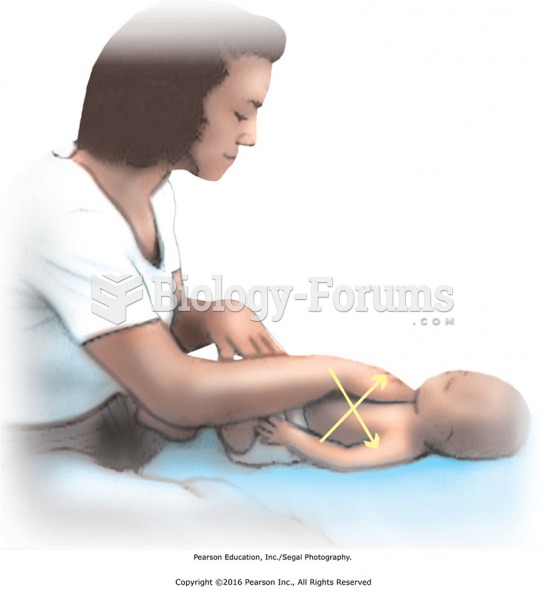|
|
|
Your heart beats over 36 million times a year.
Though newer “smart” infusion pumps are increasingly becoming more sophisticated, they cannot prevent all programming and administration errors. Health care professionals that use smart infusion pumps must still practice the rights of medication administration and have other professionals double-check all high-risk infusions.
Of the estimated 2 million heroin users in the United States, 600,000–800,000 are considered hardcore addicts. Heroin addiction is considered to be one of the hardest addictions to recover from.
It is important to read food labels and choose foods with low cholesterol and saturated trans fat. You should limit saturated fat to no higher than 6% of daily calories.
In ancient Rome, many of the richer people in the population had lead-induced gout. The reason for this is unclear. Lead poisoning has also been linked to madness.
 Placenta previa. The condition is caused by the development of the placenta over the cervical canal,
Placenta previa. The condition is caused by the development of the placenta over the cervical canal,
 Direct pressure to suboccipital muscles. Fingers press up into the cervical muscle attachments along ...
Direct pressure to suboccipital muscles. Fingers press up into the cervical muscle attachments along ...





